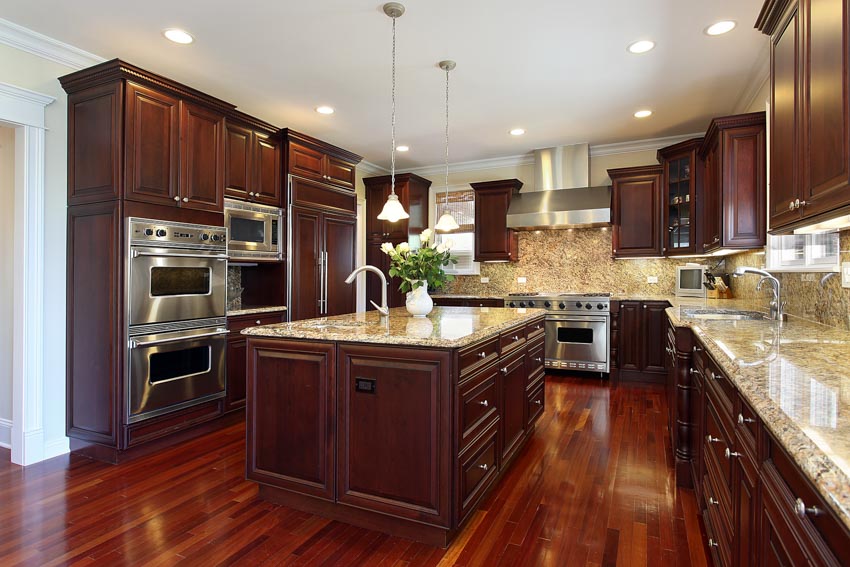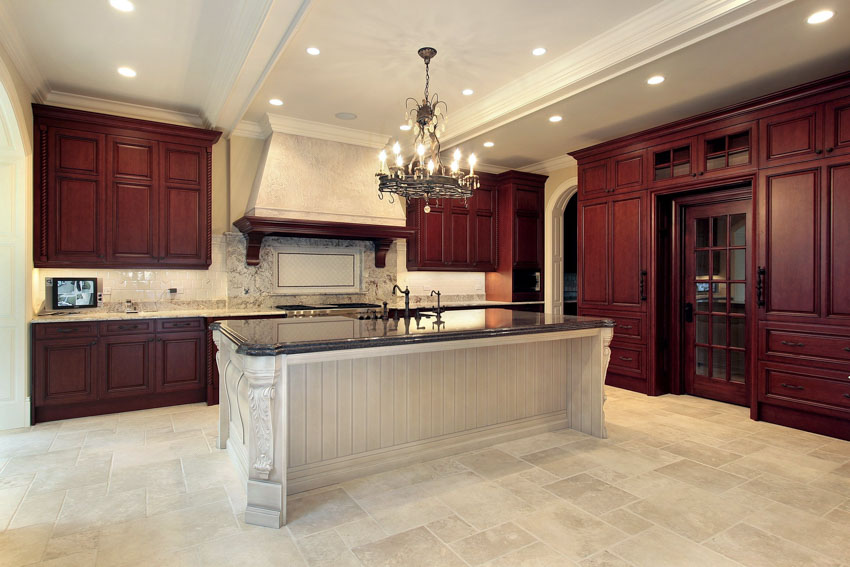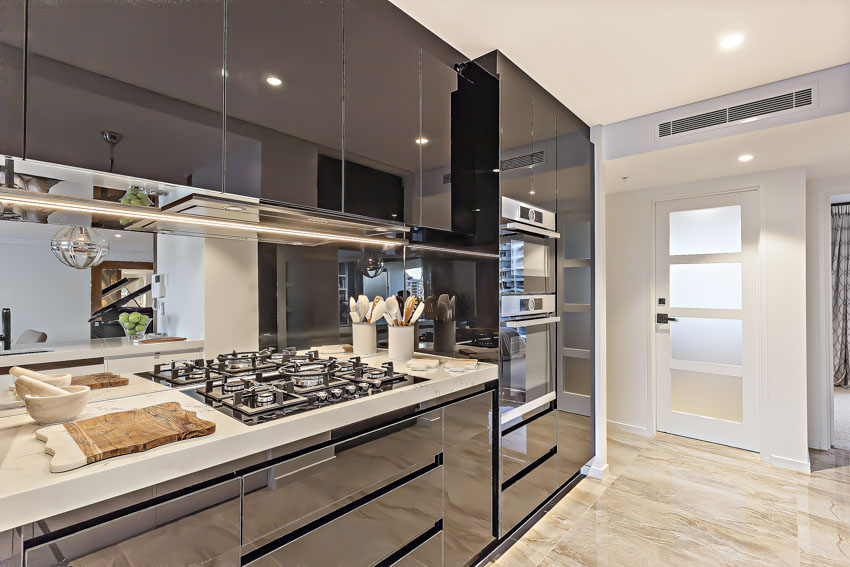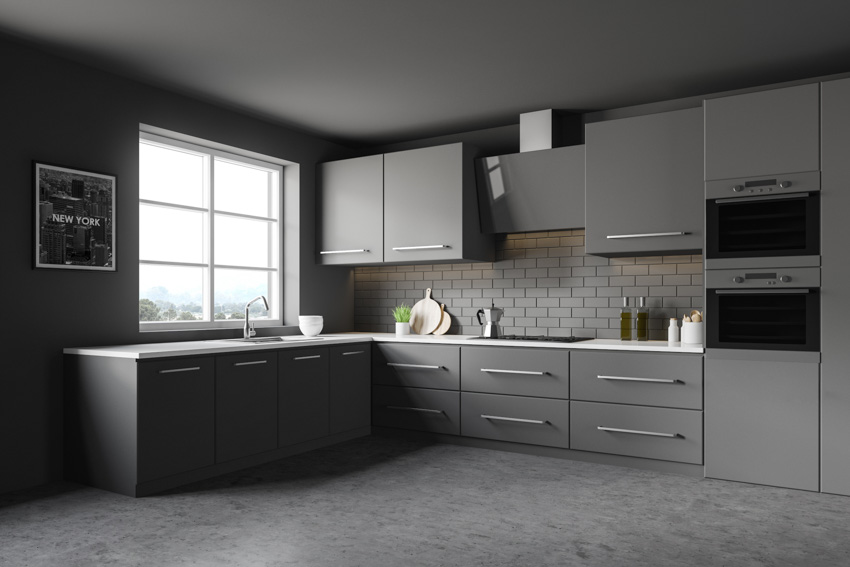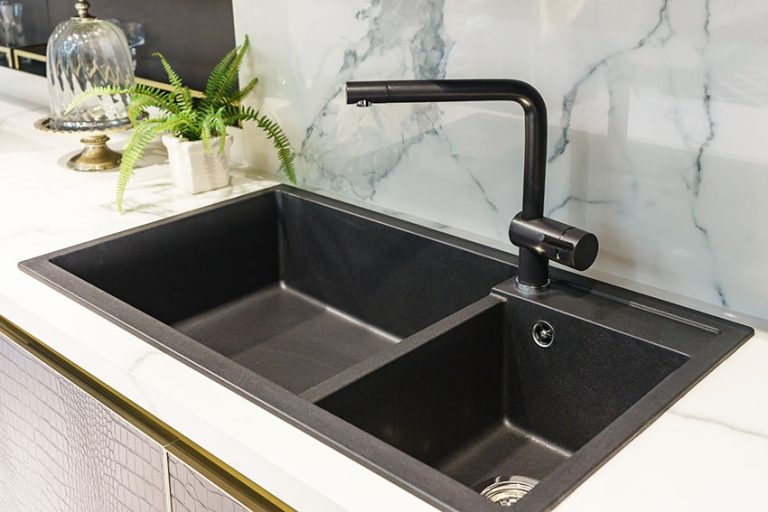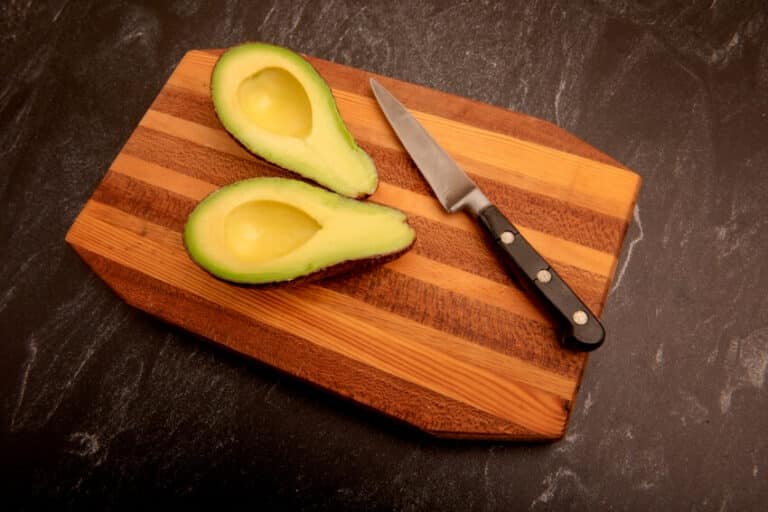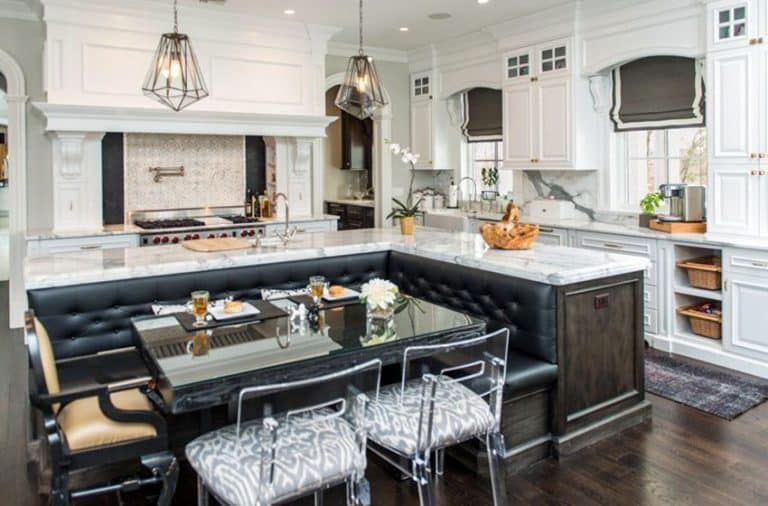How To Choose Kitchen Floors With Dark Cabinets?
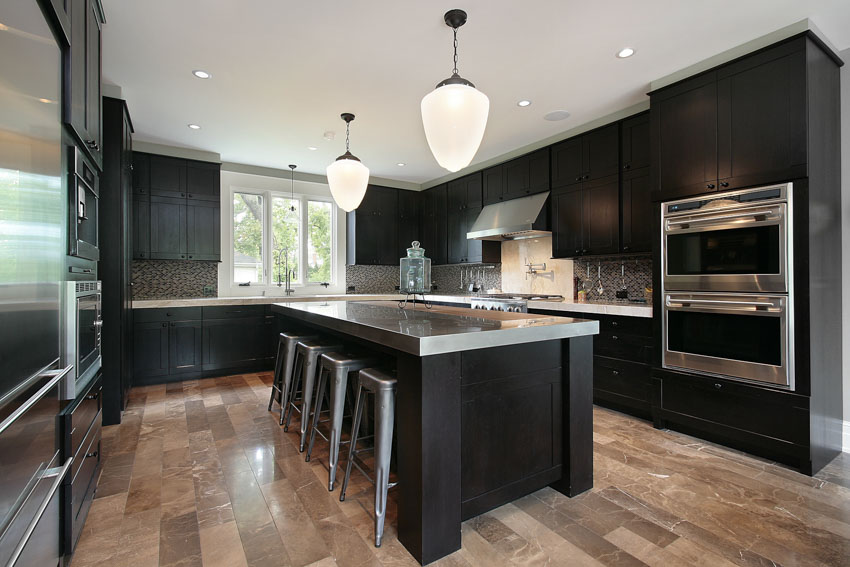
There are no hard and fast rules when it comes to matching your kitchen floors with dark cabinets. Rather, it is important to consider the style, material, and color, as well as your overall design goals for your kitchen. Of course, the floor and cabinets are two major design elements in your kitchen, and you don’t want them to compete or work against each other. Instead, your floors should complement your dark storage.
Remember that the two elements don’t necessarily need to match. For a more in-depth understanding of your flooring options, take a look at some of our best style tips. They include: what color wood your kitchen floor should be if you have dark cabinets, how to pair with light or dark-colored flooring, and the best flooring materials.
Choosing Flooring For Dark Cabinets
Two elements of your kitchen that can make or break the whole design are the cabinet color and the floor color and material. The floor materials recommended for kitchens include hardwood, tile, vinyl, concrete, and laminate. If you are going with hardwood flooring, a floor color one to two shades lighter than the cabinets will be the best compliment. Some warm-toned wood types that follow this rule include Oak, Ash, and Maple.
Any of these woods will complement without competing with dark tones. Typically, gray and white hardwood goes best with dark blue, green, and black doors. Therefore, light gray is another excellent color for cool-toned storage spaces. White pine or oak hardwood flooring is another option that creates a dramatic statement when paired with dark kitchen cabinets. Any wood species can be whitewashed to create this look.
Although light wood floors look best with dark cabinets, you can opt for dark floors as long as they are a few shades lighter. Too many dark colors in the kitchen may make it feel like a small, closed-off space.
Tile is another popular flooring option for the kitchen, including Ceramic, Porcelain, and Stone. Ceramic tile is softer and more porous than porcelain, making it easier to cut and install. Ceramic tile is usually glazed, making it impervious to kitchen spills and splashes. However, Ceramic tile is more prone to damage if heavy objects are dropped on the surface.
Porcelain tile is stiffer and less porous than Ceramic tile and is, therefore, a good choice for high-traffic areas like kitchens and bathrooms. It can be glazed or unglazed; both options do not affect the durability of the tile. Porcelain tile is more difficult to install than Ceramic.
Stone tile can be made from slate, granite, limestone, travertine and marble. This is the most porous tile option and needs to be sealed every two to three years. Polished stone can be slippery when wet whereas honed stone offers more traction. This is the most expensive tile option and needs much more upkeep.
All of these types of tiles come in various colors and patterns. Ceramic and Porcelain tiles come in squares, rectangles, and wood-look tiles. These storage spaces would look best with neutral beige colors with similar undertones, gray colors with warm or cool undertones, and white tile. Natural stone tiles come in various patterns including octagons, squares, rectangles, circles, and other unique designs.
Stone tile can also come in more traditional textured squares and organic shapes. I recommend the same beige, gray, or white colors for natural stone tile in any pattern.
Using Vinyl and Laminate flooring in the kitchen is a very popular option for its durability and endless possibilities. In recent years, the colors and patterns for Vinyl and Laminate tile have greatly improved and even include styles that mimic wood and tile patterns.
That said, I would suggest following the same color rules for hardwood flooring and tile flooring when choosing Vinyl or Laminate flooring.
What Color Wood Floor With Dark Wood Cabinetry?
There are many different colors of wood floors that can work well to achieve your overall design goals. Ideally, the wood floor would contain undertones that match the colors present in these cabinets.
If yours contain cool hues such as blue or purple, ebony wood flooring will complement them well. Dark brown wood doors with warm undertones, such as gold, red, and yellow work well with dark wood floors, whether stained or painted.
Choosing between light wood floors and the opposite shade is a difficult decision, and affects whether your kitchen feels gloomy or bright. You should think about the type and quality of natural light your kitchen gets at various times of the day.
If you want to brighten a kitchen with these dark-toned additions, light-colored wood floors are best. If your kitchen is sun-drenched, maybe some light-absorbing hardwood floors are the way to go.
While you’re considering the light, take note of the profile of your cabinets. Those with raised elements or carved details can cast shadows that make your kitchen appear dimmer. You may be able to mitigate this by supplementing the ambient and task lighting in your kitchen. If not, a lighter wood floor is probably the best choice.
A weathered gray wood floor can be placed alongside brown, gray, or black pieces to create a semi-industrial feel. Hardwood floors in the kitchen with natural or artificially added red undertones have a luxurious look that can be paired with glossy black additions for a sophisticated look.
Whether you’re renovating or designing a new build, there are plenty of reasons you might need advice about what flooring materials pair best with these cabinets.
If you have high-quality wood cabinetry already, they could outlast your floors by several decades, requiring you to choose new flooring. Or perhaps you love the look of these fixtures and are set on having them in your new kitchen, but you’re not sure what kinds of floors will go best.
The best flooring will complement these cabinets. That doesn’t mean the floor should be made from the same material, in the same color as these additions, although that is a valid design strategy.
It means that both these elements share one or more similarities, such as material, style, or color. Perhaps they are the same shade of mocha, but the cabinets are acrylic and the floor is gleaming dark hardwood. Or, solid-wood cabinetry can be paired with another natural element, such as a slate floor.
In kitchens with dark floors, achieving a balanced look between cabinetry and flooring is essential. According to kitchen design expert Chris Ruffé, a good strategy is to pair lighter cabinets with darker countertops, or vice versa. He recommends steering clear of overly matching finishes, suggesting, for instance, dark plank floors with contrasting oak veneer cabinets. Current trends include French-inspired designs with dark-hued parquet floors and understated cabinetry colors, and dark matte finishes in colors like navy or black, ideally paired with marble countertops and brass details. The incorporation of varied finishes and materials in kitchen design is also becoming increasingly popular.
Best Flooring With Dark Wood Cabinets
Tile Flooring: Tile is a kitchen-friendly, long-lasting, and low-maintenance material. Dark wood storage solutions can be nicely contrasted with lighter-colored tiling with subtle designs. The appearance of lighter natural stone tiles gives off an earthy, organic feeling.
Hardwood Flooring: They can be contrasted dramatically with lighter-colored hardwood flooring. For hardwood flooring, common options include oak, maple, and birch. This choice offers a timeless and sophisticated appearance.
Solid-wood storage bring an element of nature into your kitchen. They are also a high-quality and extremely long-lasting product. Match the durability and quality of dark, solid-wood cabinets by pairing them with hardwood floors that are two shades lighter.
Vinyl Flooring: Vinyl flooring may imitate the appearance of hardwood or tile and is a practical and affordable solution. For individuals who desire a wood-look floor without the maintenance of hardwood, luxury vinyl tile (LVT) is a wonderful option.
Laminate flooring: Laminate flooring can imitate the appearance of tile or hardwood at a reasonable price. This choice offers a timeless appearance without breaking the bank.
To create an elegant and cohesive look, it’s recommended to pair dark fixtures with neutral beige colors that have matching undertones, as well as gray shades that have either warm or cool undertones. Additionally, white tile can be a great complement to the overall design scheme.
What Floors To Choose With Dark Laminate Cabinets
Laminate cabinets, which are made from compressed wood fibers wrapped around a solid core, come in many colors, including darker shades and printed patterns. Some of these patterns convincingly mimic the look of wood. Laminate will also accept certain kinds of paint. This versatile material comes in a range of finishes, from matte to high gloss.
To find the best flooring to go with laminate models, look at wood or tile floors with a similar finish. For an earthy, natural feel, consider neutral-colored, matte-finish tiles with dim, matte-finish laminate options.
What Flooring To Use With Acrylic Cabinets
Acrylic is yet another cabinetry material option. Acrylic cabinets are made from a durable, high-gloss, solid-color surface. They are available in both dark and light colors, although the color range is somewhat more constricted when compared to laminate options.
Because acrylic kitchen cabinets have such a polished, almost futuristic look, they need to be paired with sleek flooring. Choose the finish for the floor carefully to avoid generating excessive glare.
Pairing Cabinets With With Light Floors
Rich-toned kitchen cabinets are a beautiful design feature and they deserve to be shown off. Light-colored floors help these fixtures stand out, without allowing them to overwhelm the kitchen. These two elements are a classic combination that can work with any style and is easy to pull off.
Blonde wood floors with chocolate-colored models create an inviting atmosphere that can be paired with nearly any color scheme on the walls and trim. Light types of tile floors in neutrals like cream, gray, or off-white can help brighten a kitchen and show off deep blue types.
For a sophisticated and traditional design, consider light-colored natural stone flooring underneath these solid wood options. High contrasts create visual interest, and one of the most arresting high-contrast combinations is black and white. If you’re bold enough to install black cabinets, a white tile or white-washed wood floor brings crispness and sharpness into your kitchen.
A softer, lower-contrast design scheme might use amber-colored hardwood floors to show off the golden glow of honey oak fixtures.
Using Dark Floors and Cabinets – Do You Dare?
There are many different strategies for using dark floors in a kitchen with these cabinets. In a large kitchen, these floors paired with similarly toned cabinets can help anchor and ground the space, providing a solid design foundation.
In open-plan living areas with a single-wall kitchen, these cabinets and flooring help define the area of the kitchen. Note that the choice to use dark colors on both the floors and cabinets may make some spaces look smaller, so you probably want to avoid it if your kitchen is already cramped.
Pairing fixtures of this shade with floors of the same dark color creates a dramatic statement in the kitchen. While black cabinets with black floors may be too intense and foreboding for many kitchens, a gray cabinet/floor combination is soothing and serene. If you’re a bit braver, consider an indigo color scheme.
For an updated, more contemporary feel, match laminate flooring with high-gloss acrylic cabinets in deep hues such as cranberry, indigo, or even plum. An intense, liquid-like design scheme can be achieved by choosing high-gloss laminate models in a dark gray color and black tile floors.
If you have both dark cabinets and floors, you will need to relieve the intensity with lighter hues on the walls, ceiling, and light fixtures. The countertop and backsplash can also be used to introduce colors that absorb less light. A chic and relaxing effect can be achieved using a monochrome palette.
Now that you’ve got some inspiration and information, you’re ready to apply what you learned in your own kitchen. Show off this design that furthers your style goals while keeping your space beautiful and functional.
See more related content in our article about laminate vs hardwood flooring on this page.


